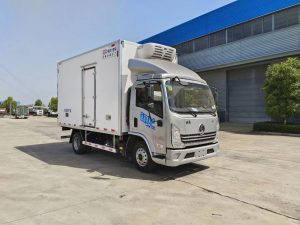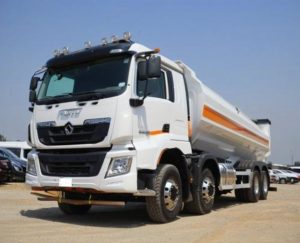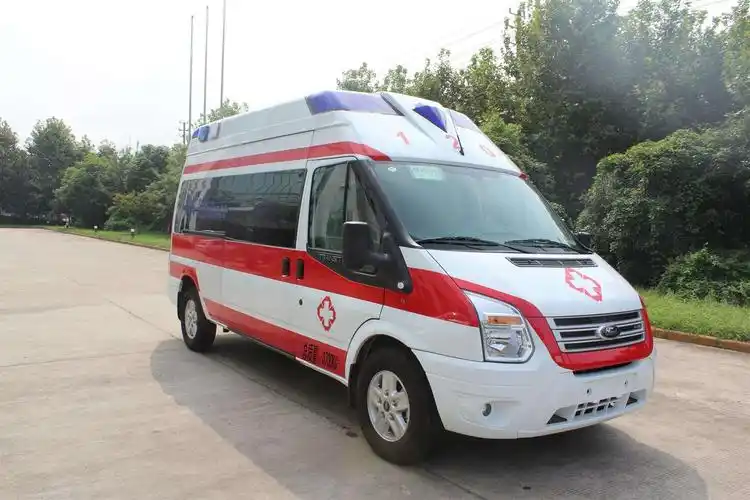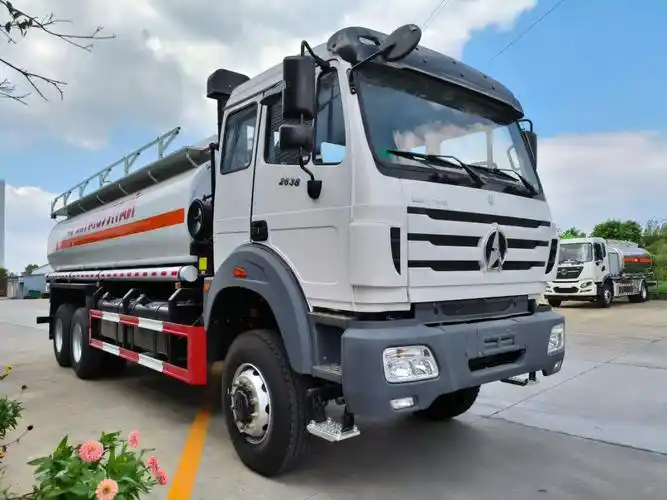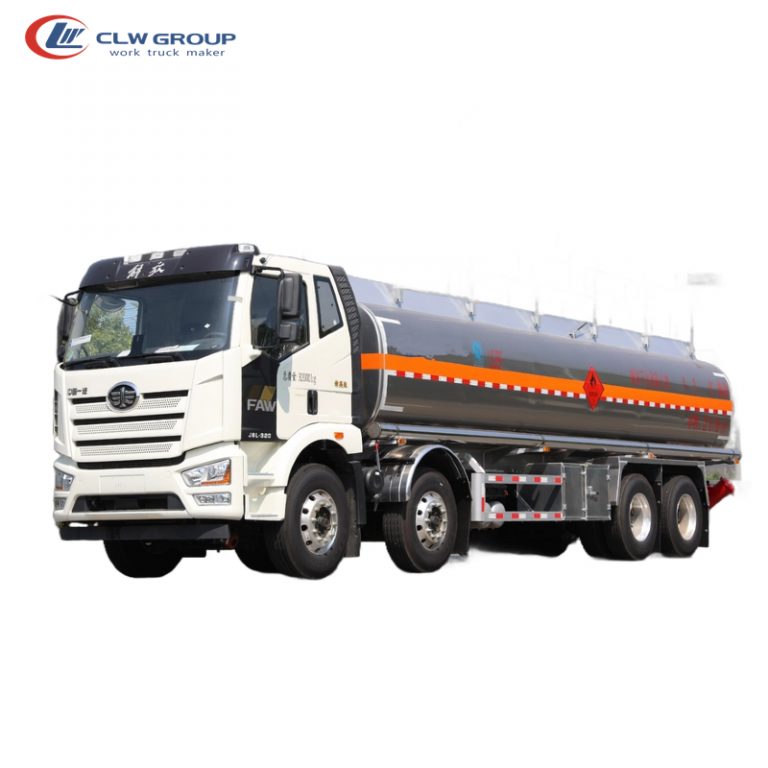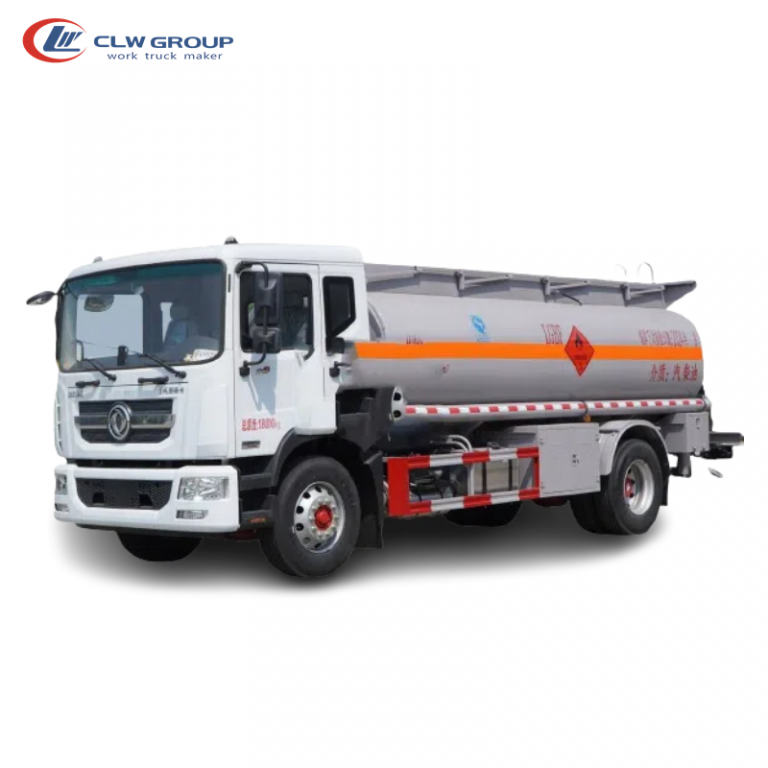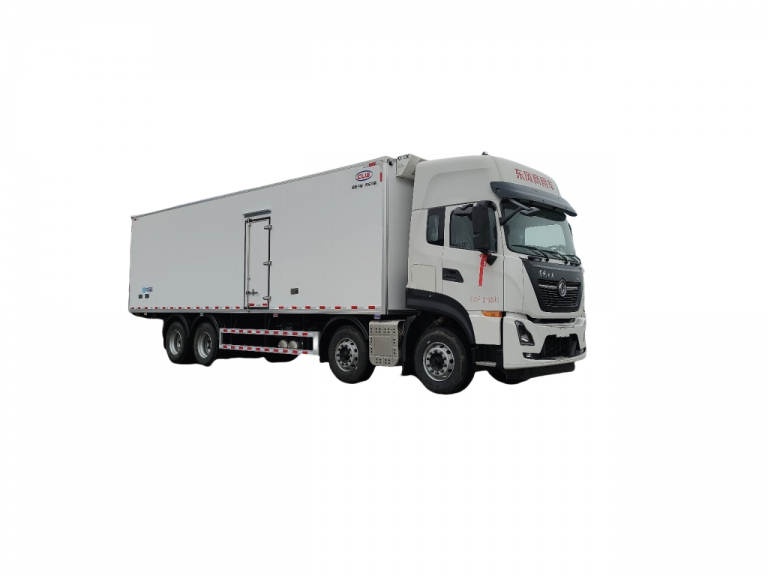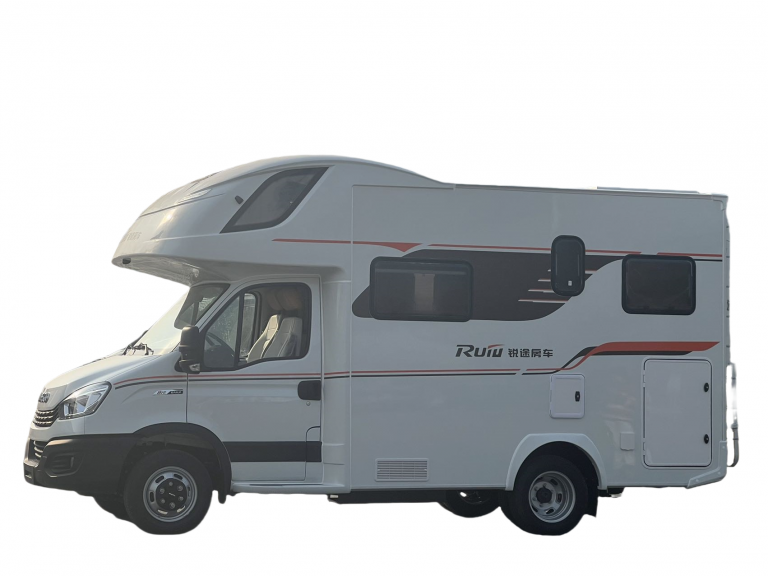Table of Contents
Toggle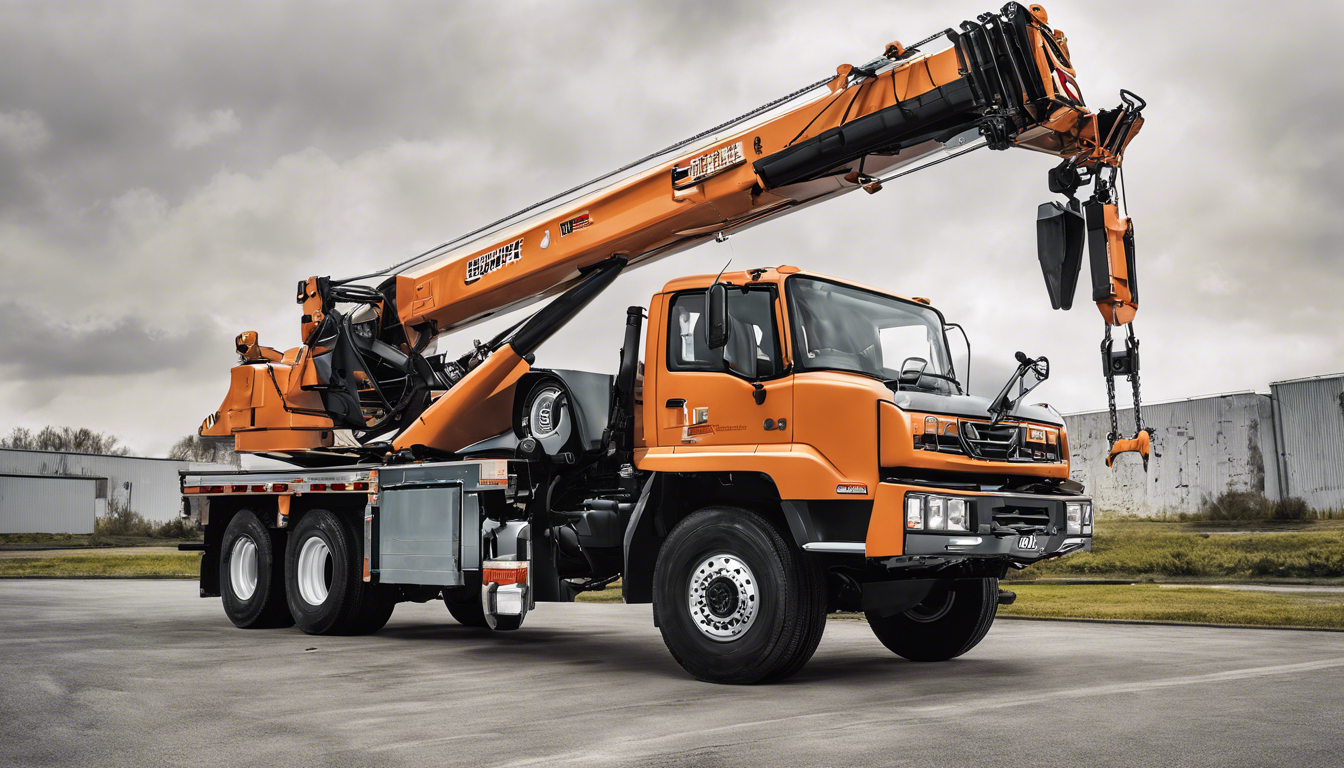
In the realm of construction, logistics, and large-scale project management, the crane truck has cemented its place as an indispensable piece of machinery. Combining the mobility of a truck with the lifting power of a crane, these vehicles offer unmatched versatility and efficiency on the job site. Their role in lifting heavy materials and equipment simplifies tasks that would otherwise require multiple machines, underscoring their value in various industrial applications. As the demand for more sophisticated construction solutions rises, so does the interest in crane trucks for sale, highlighting their significance in today’s market.
This article delves into the mechanics of how crane trucks work, offering an informative overview for professionals and enthusiasts alike. We will explore the anatomy of a crane truck, touching on the different models available and their key components. Safety measures, which are paramount for crane truck operations, will also be discussed, along with the broad range of applications in various industries. For those considering a crane truck for sale, factors to keep in mind when making a purchase will be covered. Additionally, the importance of regular inspections and upkeep to ensure these vehicles continue to operate safely and efficiently will be emphasized, providing a comprehensive guide for anyone interested in understanding the dynamics of crane trucks.
Understanding Crane Trucks
Crane trucks, often referred to as boom trucks, are integral to industries requiring the lifting and transporting of heavy materials. These vehicles combine the functionality of a crane and a truck, allowing them to not only transport heavy loads but also lift them to significant heights. This dual capability makes crane trucks a versatile and essential tool in fields like construction and logistics.
Hydraulic Systems and Their Functionality
At the core of a crane truck’s operation is its hydraulic system, which utilizes pressurized fluid to power the movement of the crane. This system is based on a simple principle: transmitting forces through an incompressible fluid, typically oil. When a piston in the crane pushes down on the oil, the oil transmits this force to another piston, which is then driven up, enabling the crane to lift heavy loads with ease.
Crane trucks are equipped with various types of hydraulic pumps that generate the necessary pressure to operate the crane. These include variable-displacement pumps and gear pumps, which help in pressurizing the hydraulic oil. The pressure within the hydraulic system is crucial for the crane’s operation, and it can be adjusted by the operator using controls like the foot throttle, which increases the pump speed and thus the pressure.
Structural Components and Mechanisms
The most recognizable part of the crane truck is the boom. This essential component is a steel arm that extends to lift loads to considerable heights. Most booms have telescoping sections that can extend to reach further, allowing the crane to perform tasks across various distances. Attached to the boom is a jib, which provides additional reach, and together, they enable the crane to maneuver loads with precision.
The stability of crane trucks during operation is paramount, hence the inclusion of outriggers and counterweights. Outriggers extend from the base of the crane to stabilize the truck during lifting operations, distributing the load evenly and preventing tipping. Counterweights, on the other hand, are used to balance the crane’s weight against the loads being lifted, providing additional stability.
Operational Features and Safety
Crane trucks are designed with several features that enhance their functionality and safety. The operator’s cab houses controls that allow for precise manipulation of the crane’s movements. Safety is further enhanced by features like the load moment indicator, which alerts operators if the load approaches the crane’s maximum capacity, preventing overloading and potential accidents.
Moreover, the crane’s ability to rotate, often facilitated by a Rotex gear, allows for 360-degree movement, enabling operators to position loads accurately. The strength and durability of steel cables used in crane trucks are critical, as they must withstand the forces of lifting heavy loads without compromising safety.
In summary, understanding the mechanics behind crane trucks reveals a complex interplay of hydraulic systems, structural components, and safety features. These elements work together to provide the robust strength and precision required in various industrial applications, making crane trucks an indispensable asset in the modern world of construction and logistics.
The Anatomy of a Crane Truck
Crane trucks are complex machines that play a pivotal role in construction and logistics by facilitating the transportation and lifting of heavy materials. The anatomy of a crane truck includes several crucial components, each designed to support its functionality and enhance its operational efficiency.
Basic Framework
The basic framework of a crane truck provides the essential structural support needed for its operations. This framework includes a robust column and a carrier vehicle, which together form the foundation of the crane. The column is central to the crane’s structure, supporting the arm system and stabilizers that are critical for lifting operations. The carrier vehicle not only transports the crane but also houses the hydraulic crane system, which powers the crane’s lifting mechanisms.
Arm System
The arm system of a crane truck is a complex assembly that includes the boom, jib, and various stabilizers. The boom is the most recognizable part of the crane, a large steel arm that can extend to significant lengths, often up to 100 feet or more. This extension capability is provided by telescoping sections that fit together, allowing the crane to reach heights and distances that other machines cannot. Some booms are equipped with a jib, a lattice structure that further extends the boom’s length, enhancing its ability to maneuver loads with precision.
The arm system is stabilized by outriggers, retractable supports that extend from the crane’s base when in operation. These outriggers increase the crane’s footprint, providing stability and preventing tipping or twisting during lifts. Additionally, heavy counterweights are placed at the back of the crane truck to balance the loads being lifted, ensuring the machine remains stable and secure.
Carrier Vehicle
The carrier vehicle is integral to the crane truck, serving as both the mobility mechanism and the base for the hydraulic crane system. It is designed to handle the substantial weight and stress of crane operations, with reinforced structures that support the crane’s functionality. The hydraulic system within the carrier vehicle is crucial, using pressurized fluid to power the crane’s movements. This system includes hydraulic jacks and support plates that help manage the forces and weight distribution during lifting operations.
Moreover, the carrier vehicle is equipped with features that allow it to travel on highways, moving between job sites without the need for additional transport. This capability significantly enhances the utility of crane trucks, combining traditional crane power with vehicular mobility.
Understanding these key components—the basic framework, arm system, and carrier vehicle—provides insights into how crane trucks are designed to perform a variety of lifting tasks efficiently. Each component plays a vital role in ensuring the crane truck operates safely and effectively, making it an indispensable asset in modern construction and logistics.
Different Models of Crane Trucks
Hydrocrane Trucks
Hydrocrane trucks, pioneered by Roy O. Billings in the 1940s, marked a significant evolution in crane design with their integration of hydraulic systems. The initial model, the H-2 Hydrocrane, launched in 1946, was capable of lifting two tons at an 8-foot radius and could be mounted on any two-ton truck. This model featured a telescopic boom and hydraulically operated outriggers, enhancing its mobility and safety. The Hydrocrane’s simplicity and effectiveness in handling various lifting tasks made it a popular choice, leading to further developments such as the H-3 and H-5 models by Bucyrus-Erie Co. These models not only retained the mobility of their predecessors but also introduced capabilities like operating as a truck-mounted backhoe, known as a Hydrohoe, with the H-5 model supporting up to 15 tons.
Sidelifter Crane Trucks
Sidelifter crane trucks are specialized for handling and transporting large containers. These trucks are equipped with lifting spreaders that can hook, raise, and lower containers onto the truck, making them ideal for logistics and shipping industries. The design of the Titan container side loader, a notable example, emphasizes efficiency and safety. It can handle containers ranging from 20 to 45 feet and stack them up to two levels high. The integration of advanced hydraulic systems in these trucks allows for precise control and stability, ensuring the safe handling of heavy loads even in tight spaces.
Articulated Crane Trucks
Articulated crane trucks feature a rotating column and a crane that is typically mounted on commercial vehicles. These trucks are distinguished by their knuckle boom, which includes an articulation joint allowing for greater versatility and reach. This design is particularly beneficial in industries like construction, where the ability to maneuver in limited spaces is crucial. Articulated crane trucks can lift heavy materials such as steel beams and concrete panels, making them indispensable on many modern construction sites. Their ability to fold and extend their boom segments enables access to hard-to-reach areas, further enhancing their utility in various applications.
Each model of crane truck has been designed to meet specific industry needs, offering a range of functionalities from basic lifting and moving to complex maneuvers in restricted spaces. These trucks continue to be essential tools in construction, logistics, and infrastructure projects worldwide, demonstrating the ongoing innovation in mobile crane technology.
Key Components of Crane Trucks
Crane trucks are integral to numerous industries, thanks to their robust construction and versatile functionality. Understanding the key components that make up these powerful machines is essential for recognizing their capabilities and operational requirements. Here, we explore some of the primary elements that are critical to the performance and safety of crane trucks.
Hydraulic Crane System
At the heart of a crane truck’s functionality is its hydraulic crane system, which powers the movement and lifting capabilities of the crane. This system is composed of various components including hydraulic pumps, control valves, and hydraulic cylinders. The hydraulic fluid, usually a type of oil, is the medium that transfers power in the system, resisting compression and withstanding high temperatures and pressures. It is stored in the hydraulic reservoir and pressurized by the hydraulic pump, which is typically driven by the crane’s engine. The control valves regulate the flow and pressure of the fluid, allowing precise control over the crane’s movements.
Hydraulic Jacks
Hydraulic jacks are a crucial part of the crane truck’s lifting mechanism. These jacks use the pressurized hydraulic fluid to create lifting force. When activated, the hydraulic jacks extend, pushing against the ground to lift the crane and the load it carries. This not only enables the crane to lift heavy loads but also stabilizes the crane during lifting operations, ensuring safety and efficiency.
Support Plates
Support plates are integral to the distribution of weight and stabilization of crane trucks during operations. They work in conjunction with hydraulic jacks, providing a solid base that helps to manage the forces and weight distribution when lifting heavy materials. These plates are typically located at the base of the hydraulic jacks and play a vital role in preventing the crane from sinking into soft ground or shifting during operation.
Each of these components—hydraulic crane system, hydraulic jacks, and support plates—works in harmony to ensure that crane trucks can perform a wide range of tasks reliably and safely. From lifting heavy construction materials to moving industrial equipment, the efficiency of crane trucks relies heavily on the seamless operation of these key components. Understanding how they function together provides valuable insights into the capabilities and maintenance needs of these essential machines.
Safety Measures for Crane Truck Operations
Crane truck operations involve high risks, and implementing stringent safety measures is crucial to prevent accidents and injuries. A comprehensive understanding of these measures not only ensures compliance with regulations but also secures the safety of operators and other personnel on site.
Pre-Operational Procedures
Before any crane operation, it’s essential for operators to conduct a thorough pre-operational inspection. This includes checking the crane’s hydraulic systems, rigging gear, and the upper limit switch, which prevents the load block from causing damage to the hoist. Operators should also verify the location of the power disconnect switch for the runway to quickly address any unexpected movement of the crane.
Training and Monitoring
New operators must undergo a mandatory one-day class on crane operation and rigging, followed by specific training on the equipment they will be handling. Continuous on-site monitoring for the initial weeks is vital to ensure that they apply the safety protocols effectively.
Regular Checks and Maintenance
Daily inspections are a statutory requirement in several countries and are crucial for identifying potential issues that could lead to accidents. Tools like the Konecranes CheckApp for Daily Inspections facilitate these inspections by helping operators record and address any discrepancies immediately.
Operational Safety
Understanding and adhering to the crane’s operational limits as per the manufacturer’s specifications is fundamental. Operators should never exceed these limits and always ensure that all servicing and maintenance checks are up to date. Additionally, the ground conditions should be assessed to confirm they can support the vehicle’s weight along with the load. Communication systems must be checked and all electronic devices should be stowed away to avoid interference during operations.
Environmental and Site Conditions
Operators need to be acutely aware of their surroundings, including overhead hazards and the stability of the ground within the operating area. Conditions such as increasing winds can significantly impact crane operations; thus, operations should be halted if safety becomes compromised.
Load Handling and Accident Prevention
Rigging problems account for a significant portion of crane accidents. Proper rigging ensures that loads are secure and minimizes the risk of dropping. Operators should never stand under a load, as the consequences of load swings or drops can be fatal.
By integrating these safety measures into daily operations, crane truck operators can significantly reduce the risk of accidents and ensure a safer working environment. These practices not only protect the operators but also enhance the overall efficiency and longevity of the crane equipment.
Applications in Various Industries
Crane trucks have revolutionized numerous sectors by providing essential lifting and transport capabilities. Their versatility makes them indispensable in a variety of industrial applications.
Construction
In the construction industry, crane trucks are crucial for moving heavy materials like bricks, blocks, and large construction equipment from merchants to job sites. They enhance efficiency by delivering materials directly where needed, utilizing their maneuverability and rotational capabilities that can vary between 180 to 360 degrees. This allows for precise placement of materials, reducing manual labor and improving site logistics. Additionally, crane trucks are vital for hoisting framing materials to elevated work sites and positioning structural elements like trusses, which are fundamental in modern construction practices.
Freight Handling
The role of crane trucks in the freight industry cannot be overstated. They streamline the process of loading and unloading heavy and awkward loads, such as oversized machinery and metal containers, from ground to truck and truck to ship. This capability is particularly valued in ports and shipping yards where efficiency is crucial. The use of radio remotes for crane operation enhances safety by allowing precise movements from a distance, crucial in tightly packed or hazardous environments. Companies like The Freight Collective leverage crane trucks to ensure that freight operations are not only efficient but also safe and timely, enhancing overall customer satisfaction.
Utilities
Utility companies find crane trucks especially useful for maintaining and expanding infrastructure in densely populated or remote areas. Their compact size and agility make them ideal for navigating through urban environments where disruptions need to be minimized. Crane trucks are used for tasks such as installing or repairing power lines, setting up new utility poles, and maintaining overhead infrastructure. The precision and reach provided by these trucks are essential for placing heavy equipment like transformers on utility poles or for stringing cables across difficult terrains, ensuring reliable utility services are maintained or restored promptly.
Through these applications, crane trucks demonstrate their critical role across diverse industries, highlighting their adaptability and effectiveness in meeting the complex demands of modern industrial operations.
Factors to Consider When Buying a Crane Truck
When purchasing a crane truck, several critical factors must be evaluated to ensure that the investment aligns with your operational needs and budget constraints. Here are key considerations to guide your decision:
1. Determine the Purpose and Requirements
Understanding the specific needs and applications of the crane truck is essential. Consider the types of loads, the environment in which the crane will operate, and the frequency of use. This will help in selecting a crane with the appropriate capacity, durability, and features suited to your project’s demands.
2. Assess the Crane’s History and Usage
A thorough evaluation of the crane’s history is crucial, especially when considering a used model. Check for any records of past accidents, repairs, and general maintenance. Factors like the crane’s age, hours of operation, and the conditions under which it was used (such as exposure to corrosive environments) can significantly affect its current condition and longevity.
3. Conduct a Comprehensive Inspection
Invest in a professional inspection by a certified crane inspector from a recognized association like the Crane Certification Association of America. This step is vital to identify any potential issues that could lead to costly repairs or safety hazards in the future. Additionally, consider hiring a professional crane appraiser to understand the machine’s value accurately.
4. Consider Technological and Safety Features
Modern cranes are equipped with advanced safety and operational features such as load moment indicators, anti-collision systems, and smart sensors. Evaluate these technologies, as they can enhance safety and efficiency. Ensure the crane meets current safety standards and requirements to protect your team and investment.
5. Plan Your Budget
The cost of a crane truck includes more than just the purchase price. Consider long-term expenses such as maintenance, repairs, and part replacements. Setting a budget beforehand can help manage these costs effectively. Sometimes, opting for a used crane with a good service record can provide significant savings without compromising on functionality.
6. Evaluate Repair and Maintenance Facilities
Before finalizing your purchase, check the availability of spare parts and service facilities nearby. Cranes require regular maintenance to operate reliably. Easy access to parts and skilled service technicians can reduce downtime and operational delays.
By carefully considering these factors, you can make a well-informed decision that ensures your crane truck meets your needs efficiently and economically, providing long-term value to your operations.
Regular Inspections and Upkeep
Regular inspections and upkeep are critical for maintaining crane trucks in optimal working condition and ensuring the safety of operators and bystanders. Adhering to legal regulations, such as OSHA Standard 1910.179, not only keeps operations compliant but also minimizes the risk of costly fines and accidents. Here is a detailed look at the different types of inspections required:
Initial Inspection
For new or altered cranes, an initial inspection is mandatory before they are put into use. This involves a detailed check of the crane’s components to ensure proper installation and functionality. The inspection must be conducted by authorized personnel who will assess everything from mechanical parts to operational capabilities.
Frequent Inspection
Frequent inspections are typically conducted on a monthly or weekly basis, depending on how often the crane is used. These inspections are crucial for identifying any signs of wear or damage early on. Key areas of focus include the hoist brake, wire rope, load chain, and the hook and latch. Inspectors also listen for any abnormal sounds that might indicate issues within the crane’s mechanisms.
Periodic Inspection
The frequency of periodic inspections also depends on the usage of the crane. Cranes that have not been used for more than a month but less than six months require a functional test inspection before next use. This comprehensive check involves examining for deformed or corroded members, loose bolts, worn parts like bearings and gears, and the integrity of the brake system. All operational indicators are tested for accuracy, and the power plants are checked for performance compliance with safety standards.
Daily Checks
Operators should start each day with a thorough inspection focusing on critical components such as the hoist, hooks, ropes, and outriggers. It’s also important to check the hydraulic systems for any leaks and ensure that all fluid levels are adequate. These daily checks help in catching potential issues before they escalate into major problems.
Maintenance and Lubrication
Regular maintenance, ideally on a quarterly basis, is essential for the longevity and efficiency of crane operations. All connections, joints, and chains should be cleaned and lubricated periodically to minimize wear by friction. It is crucial to use the correct type of grease or oil as recommended by the crane manufacturer. Additionally, components like crane wheels and the oil level should be inspected frequently to determine when replacements or refills are needed.
By implementing these regular inspections and maintenance protocols, crane operators can ensure that their equipment remains safe, efficient, and reliable. This not only protects the investment in the machinery but also safeguards the personnel involved in its operation.
Conclusion
Throughout this detailed exploration of crane trucks, we have delved into the mechanics of their operation, the intricacies of their anatomy, the various models available in the market, and the critical safety measures necessary for their operation. We have underscored the importance of understanding the hydraulic systems, structural components, and operational features that make crane trucks an indispensable asset in the construction, logistics, and utilities industries. Their ability to lift and transport heavy materials with precision and efficiency not only streamlines industrial operations but also significantly contributes to the advancement of infrastructure and development projects across the globe.
Considering the pivotal role that crane trucks play in modern industry, it is imperative for potential buyers and operators to thoroughly assess their needs, conduct comprehensive inspections, and adhere to rigorous maintenance schedules to ensure these machines continue to operate at their peak performance. The emphasis on regular inspections, safety training, and the observation of operational protocols cannot be overstated, as these measures are fundamental to safeguarding the lives of operators and enhancing the longevity of the equipment. By integrating these considerations and practices, businesses can fully leverage the capabilities of crane trucks, ensuring their operations remain both efficient and safe.

